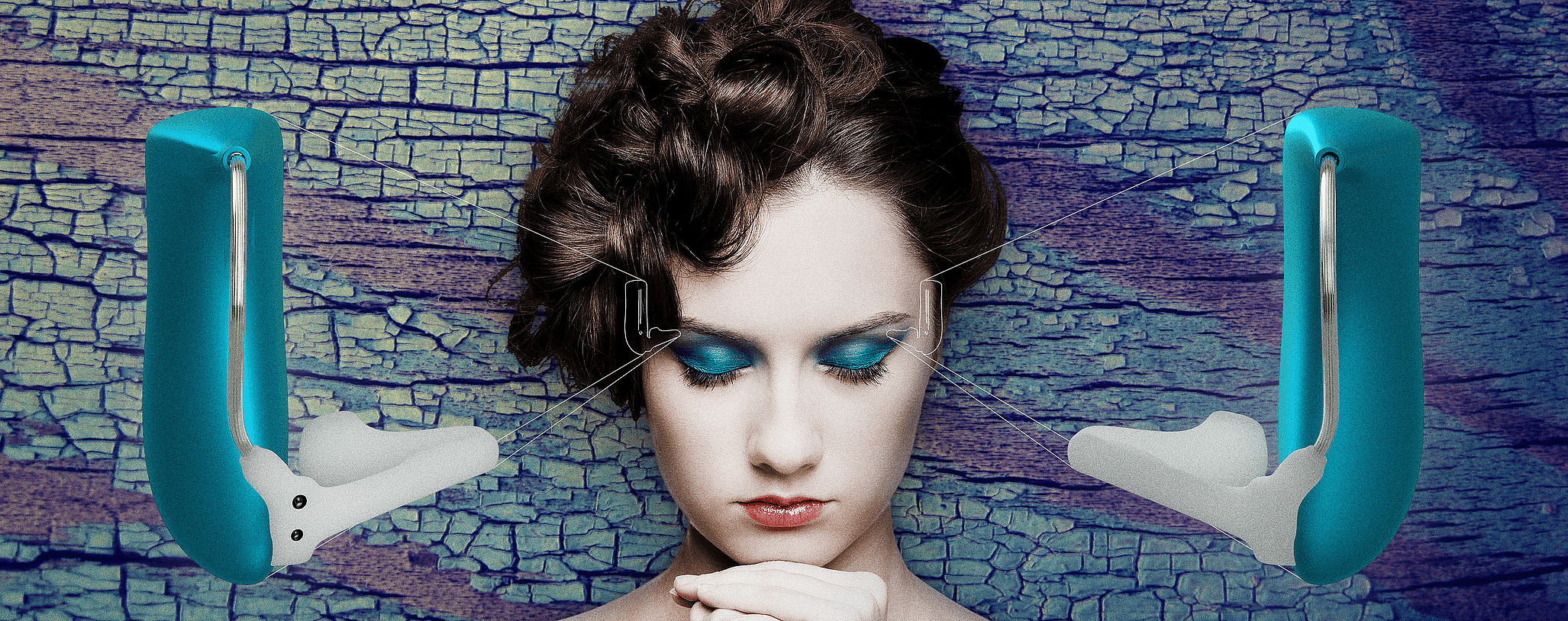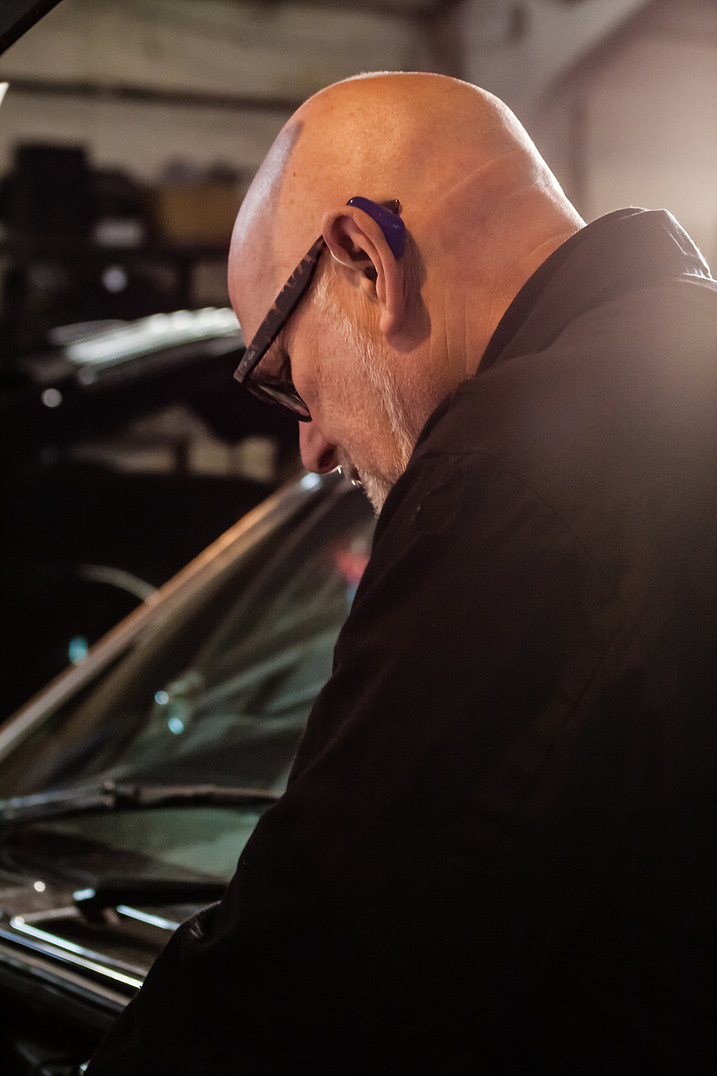WoW Woman in WearableTech | Fiona Austen, Co-founder and COO of Third Skin
Interview by Marija Butkovic @MarijaButkovic
Based just north of Birmingham, UK, Fiona Austen is co-founder and COO of Third Skin, a startup focussed on designing tech which fits less intrusively into people's lives and selves. Taking a less than traditional route into tech entrepreneurship, Fiona has spent most of her career managing bars and pubs, to finance her geek obsessions and sharpen her skills as a keen observer of human behaviour, before snapping back to her science and tech ambitions and co-founding Third Skin with her husband Si.
What is your idea / project and how did you come up with it?
Hy is a pair of smart earbuds (which is the closest word we've found to describe the patent pending design of the in ear drivers.) that nestle behind your ears, so you can comfortably wear them all day. It means making calls, listening to music and being able to track your health and wellbeing is completely hands free using voice commands. Also they don't block your natural hearing - they just augment the hearing you already have.
My co-founder and I are music lovers, information addicts and parents to our 16 month old son and 3 year old daughter. When we were apart, or when the kids were (literally) being a handful, we joked that telepathy would be really handy for just saying a supportive "hi" or "hang in there, I'm on my way" to each other, keeping the family schedule up to date or the multitude of other demands the come from 2 young children and a busy life.
The only way to do that, we figured, was to have a device that you could wear all day, and interact with by voice. We knew we could come up with a better design than existing headsets and hearables. So we did.
When did it all start and do you have other members in your team? Why is #WomenInTech movement important to you?
We started the project seriously in about April 2015, developing the initial physical design and the architecture to support the ambitious spec list we'd put together. Si and I have complementary technical and management backgrounds respectively, so it made sense for me to head up operations while he worked on the hardware.
We have a great team of people around us, including a first class marketing specialist to guide and drive the brand and two software developers working on our voice and mobile interface, plus a treasured crowd of consulting talent, including audiologists, materials scientists and electronic and sound engineers. We've also partnered with some amazing hardware companies who have been instrumental in bringing Hy to life.
#WomenInTech is of course important to us and the future generations that we hope to help inspire, as the women in tech we know and love have shaped and inspired us, and brought us to the exciting point we are now. What we hope is that the move to parity in the industry brings new thinking not about how to built things, but why.
With more and more women taking a leading role in tech, we've got an opportunity to refocus our industry's creativity on the human aspect of our relationship with technology; to improve the way technology fits into our lives, rather than the way we fit our lives around technology - something which I think has been largely sidelined in the pursuit of the Next Big Thing.
How long did it take you to be where you are now?
We often say "oh, we've been working on it for about eighteen months" but to be honest, we've been saying that for months. From ideation to now, we're probably talking two years of thought and development.
What was the biggest obstacle?
We're in it right now - crowdfunding. Even on a platform where people are less risk-averse, we have a set of factors working against us that have made Hy a difficult sell. There's resistance to such a radical design, partly because no one's ever built a speaker like this, and in no small part because of the lingering stigma attached to hearing aids.
We have everything to prove and nothing to lose, which puts us in a position where we can be bold, imaginative and outspoken. We believe the approach we've taken makes a significant step forward from older headphone designs - it's just proving hard to convince everyone to step forward with us.
What are the challenges of being an entrepreneur in the niche you are in? How about being a female founder in the country you live in?
Being a hardware startup with a small team and no formal investment is incredibly hard - what we've done wouldn't have been possible even five years ago. But access to 3d printing, electronic prototyping hardware, and the fantastic communities around them has made us able to overcome many of the barriers that would previously have made this project impossible.
Being in the UK, I'm lucky to be in one of the best places in the world for startups, period. We're also fortunate to have a huge number of programs, grants and bursaries specifically for female entrepreneurs. I just hope that these opportunities don't get hit too hard by our impending departure from the EU - a small part of a much bigger conversation in UK tech right now.
What are your biggest achievements to date?
Without trying to sound cheesy, co-founding a tech startup whilst simultaneously raising a toddler through the terrible twos and having a baby all within the same 18 month period (and staying sane!)
What are your projects you are currently working on within your company?
Hy is the first part of a much larger ambition. We're working on a family of hardware and software products, from VR/AR to a personal drone design, and some really interesting ideas around decentralising peoples' digital presence. We want to streamline how people interact in the modern world, until tech is as seamless as thought.
What will be the key trends in the wearable tech and IoT industry in the next 5 years and where do you see it heading?
I think virtual and augmented reality will continue to be the poster child of wearables, but that there will be a quiet revolution as people integrate hearables into their lives and wean themselves off their smartphones. However, until the "rules" of VR content are well understood, and AR becomes massively less intrusive, wearable vision isn't going to break into the mainstream as any more than a novelty. I'm really sad to say that smartwatches will fade away (I love my Pebble Time) as information is better recorded and received by other wearables.
All in all, wearables will become more beautiful and less intrusive. The icing on the cake will be when voice interfaces really come into their own, and we're no more than a couple of years from the first indispensable voice interface (I know, because we're building it!)
What is the most important piece of advice you can give to all female founders and female entrepreneurs out there?
"Invent as if magic exists, then work backwards to a practical solution."
Who are your 3 inspirational women in wearable tech?Leah Buechley, for inventing the LilyPad Arduino, which has pushed hobbyists to shape and break the rules of wearable tech; Imogen Heap for integrating wearables into her performances and to make it more than just a performance art curiosity; and last but by no means least, the woman who has ignited in myself, my daughter and my nieces a passion for tech and engineering, Debbie Sterling, inventor of Goldiblocks - not a woman in wearables herself, but no doubt one who will inspire them and their creators in the future.
Website: http://thirdsk.in
Twitter: @thirdskinhy
This interview was conducted by Marija Butkovic, Digital Marketing and PR strategist, co-founder of Women of Wearables and Kisha Smart Umbrella. She regularly writes and speaks on topics of wearable tech, fashion tech, IoT, entrepreneurship and diversity. Visit marijabutkovic.co.uk or follow Marija on Twitter @MarijaButkovic @Women_Wearables @GetKisha.








